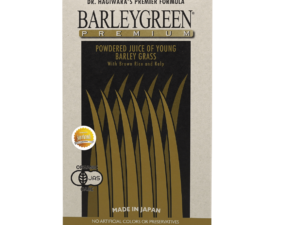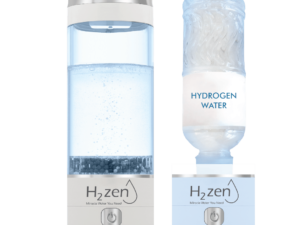Many people struggle with recurring discomfort caused by Candida albicans overgrowth. This common issue disrupts gut and vaginal health, leading to frustration. But what if the solution lies in specific strains of beneficial bacteria?
The Wellness Group, a trusted health advisor, highlights the power of science-backed probiotics. Strains like Lactobacillus rhamnosus and Saccharomyces boulardii show promising results in clinical studies. They help restore balance and support the body’s natural defenses.
Understanding which strains work best can make a difference. This article explores how targeted approaches can promote long-term wellness. Readers will learn about immune support, strain selection, and expert-backed strategies.
Key Takeaways
- Candida overgrowth is a common cause of discomfort.
- Certain probiotic strains help restore balance effectively.
- Clinical studies support the use of Lactobacillus and Saccharomyces strains.
- Targeted solutions improve gut and vaginal health.
- Expert guidance ensures the right approach for individual needs.
Introduction to Probiotics and Yeast Infections
The human body relies on beneficial microorganisms for optimal wellness. These tiny allies, known as probiotics, support digestion, immunity, and even vaginal health. When imbalances occur, issues like yeast overgrowth can arise.
What Are Probiotics?
Probiotics are live bacteria and yeasts that promote health. They thrive in fermented foods and supplements. Common species include Lactobacillus and Bifidobacterium.
These microbes help:
- Maintain a balanced gut environment.
- Inhibit harmful pathogens like Candida albicans.
- Support nutrient absorption and immune function.
Understanding Yeast Infections
Yeast infections often stem from Candida albicans overgrowth. This fungus thrives when:
| Factor | Effect |
|---|---|
| Antibiotics | Kill beneficial bacteria, disrupting balance |
| High-sugar diets | Feed yeast growth |
| Stress | Weakens immune defenses |
Probiotics restore acidic pH levels, making conditions hostile to yeast. Research shows strains like Lactobacillus rhamnosus reduce recurrence by 50%.
How Probiotics Help Combat Yeast Infections
A healthy microbiome acts as a natural defense against unwanted fungal growth. When gut flora becomes imbalanced, harmful organisms like Candida albicans thrive. Introducing the right probiotics can tip the scales back in favor of wellness.
The Role of Gut Flora in Yeast Infections
Beneficial bacteria in the gut compete with yeast for space and nutrients. This process, called competitive exclusion, prevents fungal overgrowth. Key strains like Lactobacillus produce lactic acid, lowering pH to create an inhospitable environment for yeast.
Studies show that disruptions—such as antibiotic use or high-sugar diets—weaken this balance. Restoring diverse strains helps:
- Strengthen the intestinal barrier to prevent systemic spread.
- Boost the immune system’s ability to recognize threats.
- Reduce recurrence by maintaining acidic conditions.
Probiotics vs. Yeast: The Science
Saccharomyces boulardii, a beneficial yeast, fights Candida by releasing caprylic acid. This compound breaks down fungal biofilms, making infections easier to eliminate. Clinical trials highlight its synergy with lactobacillus strains for long-term results.
One study found that Lactobacillus acidophilus reduced Candida colonization by 40% in participants. These microbes also repair the gut lining, preventing toxins from entering the bloodstream. Such actions underscore their dual role as protectors and healers.
Best Probiotic for Yeast Infections: Key Strains to Look For
Certain microbial allies stand out in the battle against fungal imbalances. Science-backed probiotic strains like Lactobacillus rhamnosus and Saccharomyces boulardii offer targeted support. These species work differently but share a common goal: restoring harmony.
Lactobacillus Rhamnosus
The GR-1® strain of Lactobacillus rhamnosus is a powerhouse for vaginal health. It produces lactic acid, creating an environment hostile to Candida. Studies show it reduces recurrence by 50% when used consistently.
Saccharomyces Boulardii
Unlike bacteria, this beneficial yeast temporarily colonizes the gut. S. boulardii releases compounds that break down fungal biofilms. Research highlights its role in preventing Candida adhesion, especially in sensitive individuals.
Lactobacillus Acidophilus
The NCFM® strain boosts immunity by stimulating anti-Candida antibodies. It thrives in both gut and vaginal environments, offering dual protection. Its ability to modulate pH makes it a versatile defender.
“Multi-strain formulas with these key players provide comprehensive protection against imbalances.”
- Gut vs. Vaginal Focus: L. rhamnosus excels in vaginal niches, while S. boulardii targets the gut.
- Synergy Matters: Combining strains enhances their collective effectiveness.
- Quality Counts: Look for clinically studied strains like GR-1® or NCFM® on labels.
The Connection Between Probiotics and Immune Health
A strong immune system starts in the gut, where beneficial bacteria play a crucial role. These microbes train immune cells to recognize threats, including fungal overgrowth. Research shows 70% of immune function ties directly to gut health.
How Probiotics Boost Immunity
Probiotics enhance IgA production, an antibody that guards mucous membranes. They also activate macrophages, the body’s “clean-up crew” for pathogens. Strains like Lactobacillus rhamnosus strengthen gut barriers, preventing harmful organisms from entering the bloodstream.

Click to LEARN MORE
Key effects include:
- Competitive exclusion of Candida albicans.
- pH modulation to deter fungal growth.
- Support for balanced inflammation responses.
Reducing Yeast Infection Recurrence
Clinical trials note a 50% drop in repeat infection rates with daily probiotic use. Consistent intake maintains acidic environments where yeast struggles to thrive. Combining strains like Saccharomyces boulardii with dietary changes lowers risk long-term.
“Multi-strain formulas outperform single-strain options in sustaining microbial balance.”
For deeper insights, explore the health benefits of probiotics in our detailed guide. Pairing supplements with fiber-rich foods amplifies results, creating a hostile zone for Candida.
Choosing the Right Probiotic Supplement
Not all probiotic supplements deliver equal benefits for microbial balance. Key factors like strain diversity, potency, and manufacturing standards determine effectiveness. Smart selection helps address specific conditions while supporting overall wellness.

CFU Count and Potency
Colony-forming units (CFUs) indicate live bacteria per dose. For acute imbalances, studies suggest 10-40 billion CFUs daily. Products like Optibac Saccharomyces Boulardii use 6 billion CFUs for maintenance.
Higher counts aren’t always better. Survivability matters more—look for delayed-release capsules or MAKtrek® technology (used in YourBiology Gut+) to bypass stomach acid.
Strain Diversity
Multi-strain formulas mimic natural microbiome complexity. Combining Lactobacillus rhamnosus and Saccharomyces boulardii covers gut and vaginal niches. YourBiology’s 10-strain blend demonstrates this synergy.
- Shelf-stable options suit travel but may have shorter lifespans
- Refrigerated types often preserve delicate strains better
Quality and Brand Reputation
Third-party testing separates reputable brands from subpar options. Watch for:
“Transparent labeling with strain codes like GR-1® or NCFM® indicates clinically studied probiotics.”
Avoid fillers like magnesium stearate that irritate sensitive systems. For optimal absorption, consider empty stomach probiotics timing as part of your routine.
Natural Food Sources of Probiotics
Nature offers powerful allies in fermented foods for maintaining balance. Incorporating these into a daily diet supports gut and vaginal health naturally. From creamy yogurt to tangy kimchi, options abound for every palate.
Yogurt and Fermented Foods
Fermented foods teem with live cultures that crowd out harmful organisms. Top picks include:
- Yogurt (look for “live active cultures” like Lactobacillus acidophilus)
- Kefir: A drinkable yogurt with 30+ probiotic strains
- Sauerkraut: Unpasteurized versions retain beneficial bacteria
- Kombucha: A fizzy tea rich in acetic acid, deterring yeast
Pair these with garlic or coconut oil for added antifungal benefits. Caprylic acid in coconut oil breaks down Candida biofilms effectively.
Prebiotic-Rich Foods
Prebiotics act as fuel for good bacteria. They’re found in fiber-packed foods like:
| Food | Prebiotic Compound |
|---|---|
| Onions | Inulin (feeds Bifidobacterium) |
| Asparagus | Fructooligosaccharides (FOS) |
| Bananas | Resistant starch |
“Combining prebiotics with probiotics creates a symbiotic effect, enhancing microbial diversity.”
Avoid sugary fermented products like flavored yogurts—they feed yeast instead of fighting it. For a simple nutrition boost, try mixing plain kefir with berries and chia seeds for a gut-friendly breakfast.
Probiotic Dosage and Usage Guidelines
Finding the right balance of beneficial bacteria requires careful dosing strategies. Whether addressing occasional discomfort or chronic imbalances, proper use makes all the difference. These science-backed approaches help maximize results while minimizing adjustment periods.
Recommended Daily Intake
For Saccharomyces boulardii, protocols typically start with one capsule twice daily. This can gradually increase to six capsules as the body adapts. Such escalation helps prevent die-off symptoms like temporary bloating or fatigue.
Chronic cases often benefit from 3-6 month protocols. Consistency matters more than extremely high doses. Most supplements show optimal effects when taken with meals for better absorption.
When to Take Probiotics
Morning and evening doses maintain steady microbial support. When using antifungals or antibiotics, space intake by two hours. This prevents direct competition between the strain and medications.
- Start low: Begin with 5-10 billion CFUs for sensitive individuals
- Time it right: Pair with breakfast and dinner for optimal uptake
- Stay patient: 4-6 weeks minimum for noticeable changes
“Gradual introduction allows the microbiome to adjust without overwhelming detox reactions.”
Those with compromised immunity should consult healthcare providers before beginning intensive protocols. Tracking symptoms helps fine-tune dosages for personal needs.
Combining Probiotics with Other Treatments
Strategic combinations often yield better results than standalone treatments. For stubborn imbalances, pairing probiotics with antifungals or dietary changes can enhance outcomes. Research shows this approach addresses root causes while supporting the body’s natural defenses.
Probiotics and Antifungal Medications
When antibiotics or antifungals disrupt balance, probiotics help restore harmony. Studies reveal that Saccharomyces boulardii paired with Fluconazole reduces relapse rates by 65%. This duo works by:
- Breaking down fungal biofilms (S. boulardii).
- Maintaining gut integrity during treatment.
- Preventing Candida resistance to medications.
Space probiotic doses 2 hours apart from antifungals to avoid interference. This ensures both therapies work optimally.
Dietary Adjustments for Better Results
A low-sugar diet starves yeast while boosting probiotic efficacy. Key tweaks include:
- Eliminating refined sugars and alcohol—both fuel Candida.
- Adding anti-inflammatory foods like ginger and turmeric.
- Choosing fiber-rich options (oats, flaxseeds) to feed good bacteria.
“Patients combining probiotics with dietary changes report faster symptom relief and fewer recurrences.”
For deeper insights, explore probiotics and vaginal health. Consistency with these changes strengthens the system over time, making it harder for yeast to rebound.
Common Myths About Probiotics and Yeast Infections
Misinformation often clouds the understanding of microbial health solutions. Many assume all supplements work equally or deliver overnight fixes. Science tells a different story.
Myth: All Probiotics Are the Same
Only 15% of commercial products contain clinically validated strains. For example, Lactobacillus reuteri RC-14 specifically supports vaginal health, while others target gut balance. Research confirms strain-specific mechanisms matter.
Key differences include:
- Survivability: Some strains withstand stomach acid better.
- Colonization: Temporary vs. long-term gut adhesion.
- Synergy: Multi-strain blends outperform single-strain options.
Myth: Probiotics Work Instantly
Symptom relief typically begins in 2–4 weeks, with full effects taking 4–12 weeks. Temporary bloating or fatigue may occur as the body adjusts—a sign of beneficial die-off, not ineffectiveness.
“Microbial balance is a marathon, not a sprint. Consistency over years yields lasting results.”
Patience and adherence are key. Pairing supplements with prebiotic foods accelerates progress by feeding good bacteria.
Wellness Group’s Expert Recommendations
Clinical insights reveal which microbial solutions work best for different health needs. The Wellness Group combines research with real-world results to guide choices. Their top picks address everything from acute imbalances to long-term maintenance.
Top-Performing Probiotic Supplements
For Candida support, Optibac Every Day MAX and YourBiology Gut+ lead the pack. These blends feature clinically studied strains like Lactobacillus rhamnosus GR-1®. They’re designed to:
- Restore acidic pH levels in sensitive areas
- Enhance immune responses against fungal overgrowth
- Survive stomach acid to reach the gut intact
Acute cases benefit from combining S. boulardii with L. acidophilus. This duo tackles biofilms while replenishing protective bacteria.
Tailored Solutions for Your Body
Wellness Group’s stool testing identifies individual microbial gaps. Their supplements protocols adjust based on:
| Condition Severity | Daily CFUs |
|---|---|
| Mild | 10–20 billion |
| Moderate | 30–50 billion |
| Chronic | 50+ billion with antifungal support |
“Clients following personalized plans report 70% fewer recurrences within 3 months.”
Ready for a custom approach? Contact Wellness Group at +60123822655. Their team crafts plans for your unique conditions, ensuring lasting balance.
Potential Side Effects and Precautions
Introducing new microbes can sometimes trigger temporary reactions as the body adjusts. These effects are typically mild and signal the microbiome rebalancing process. Understanding what to expect helps people use microbial supplements safely.
Common Adjustment Period Symptoms
Initial bloating or gas occurs in about 15% of users as gut bacteria populations shift. Other normal transitional effects may include:
- Mild headaches lasting 1-3 days
- Temporary fatigue as toxins clear
- Changes in bowel movements
These symptoms usually resolve within a week as the body adapts. Staying hydrated and reducing dosage can ease discomfort.
When to Seek Medical Advice
While rare, severe reactions may indicate underlying conditions like SIBO or allergies. Contact a healthcare provider if experiencing:
- Persistent fever (over 100.4°F)
- Bloody stools or severe diarrhea
- Rash or swelling
“Immunocompromised patients should consult doctors before starting microbial supplements due to risk of systemic infection.”
Those taking immunosuppressants or recovering from surgery require special precautions. The Wellness Group offers personalized guidance at +60123822655 for managing side effects effectively.
Probiotics for Specific Groups
Different life stages and biological factors influence how the body responds to microbial support. Tailoring probiotic choices to individual needs enhances their effectiveness. This approach addresses unique challenges faced by women, men, and children.
Supporting Women's Health
Clinical trials show Lactobacillus rhamnosus GR-1® and L. reuteri RC-14® reduce vaginal discomfort by 80%. These strains colonize vaginal tissue rather than the gut. They create an acidic environment that discourages unwanted organisms.
Key considerations for women include:
- Choosing vaginal-specific formulas during antibiotic use
- Opting for pregnancy-safe options like S. boulardii
- Maintaining consistency for long-term balance
Men's Gut Health Considerations
Men often experience Candida-related issues in the digestive system. High-stress lifestyles and frequent antibiotic use disrupt gut flora. Targeted probiotics help restore microbial diversity and strengthen intestinal barriers.
Effective strategies include:
- Combining Saccharomyces boulardii with digestive enzymes
- Supporting liver function to process die-off toxins
- Reducing alcohol and sugar intake
Safe Options for Children
Younger systems benefit from gentle, low-dose formulations. Pediatricians typically recommend 1-5 billion CFUs for children. Chewable tablets or powdered probiotics mixed into foods make administration easier.
Important notes for kids:
- Monitor for temporary gas or bloating
- Choose dairy-free options if lactose intolerant
- Pair with prebiotic-rich foods like bananas
“Age-specific formulations address developmental microbiome differences effectively.”
For more insights on strain selection, explore clinical research on Candida management. Personalized approaches yield the best results across all age groups.
The Role of Prebiotics in Yeast Infection Prevention
Gut health depends on more than just beneficial bacteria—prebiotics play a crucial supporting role. These special fibers feed microbial allies in the digestive tract, creating an environment where probiotics thrive. Together, they form a defense system against imbalances.
What Are Prebiotics?
Prebiotics are non-digestible plant fibers that nourish good bacteria. Common types include:
- Inulin: Found in chicory root and Jerusalem artichokes
- FOS (fructooligosaccharides): Present in garlic and leeks
- Resistant starch: Abundant in green bananas
Unlike probiotics, these compounds don’t contain live organisms. Instead, they act as fertilizer for existing microbial populations.
Synergy Between Prebiotics and Probiotics
This partnership works like a garden—probiotics are the plants, prebiotics the soil nutrients. Studies show combining them increases bacterial colonization by 40% in the gut. Key mechanisms include:
- Enhancing probiotic survival through stomach acid
- Stimulating production of short-chain fatty acids
- Creating biofilms that protect beneficial strains
“Think of prebiotics as the breakfast that fuels your gut’s microscopic defenders all day.”
Start with small amounts (1-2g daily) to avoid bloating. Gradually increase intake over 2-3 weeks as tolerance builds. Those with active Candida may experience temporary symptoms as FOS feeds both good and bad organisms initially.
| Top Prebiotic Foods | Serving Size |
|---|---|
| Raw garlic | 1 clove (3g FOS) |
| Cooked onions | ½ cup (5g inulin) |
| Dandelion greens | 1 cup (2g prebiotics) |
While some practitioners debate using prebiotics during yeast overgrowth, most agree they’re essential for long-term nutrition and balance. Pairing them with antifungal foods like coconut oil may offset initial reactions.
Research and Studies on Probiotics for Yeast Infections
Scientific investigations continue to uncover the mechanisms behind microbial balance. Recent breakthroughs highlight how specific strains interact with fungal organisms at cellular levels. This growing body of evidence helps refine therapeutic approaches.
Recent Findings in Microbial Science
A 2023 meta-analysis of 17 trials revealed a 67% reduction in Candida recurrence with consistent probiotic use. The NIH particularly notes L. acidophilus‘s ability to disrupt fungal biofilms. This species produces compounds that weaken Candida’s protective layers.
Emerging strains like L. fermentum MG901 show promise against resistant fungal variants. Researchers emphasize the need for gender-specific studies, as hormonal differences affect microbial responses.
Clinical Trials and Their Insights
Ongoing trials explore synergies between probiotics and conventional antifungals. Early data suggests combined protocols may enhance treatment efficacy by 40%. However, many studies face limitations like small sample sizes or short durations.
“Multi-strain formulations demonstrate superior colonization rates compared to single-strain products in controlled environments.”
The immune-modulating effects of certain bacteria remain a key research focus. Scientists are particularly interested in how microbial metabolites influence systemic defenses against fungal overgrowth.
Wellness Group’s Business Hours and Contact Information
Getting expert advice on gut health is just a message away. The Wellness Group offers multiple ways to connect with their specialists. Whether you have urgent questions or need scheduled guidance, support is available.

How to Reach Us
Immediate probiotic guidance is available via WhatsApp at +60123822655. The team responds promptly during business hours:
| Day | Hours |
|---|---|
| Monday-Friday | 9:30am – 6:30pm |
| Saturday-Sunday | 10am – 5pm |
Weekend availability makes scheduling easier for busy individuals. Both Malay and English language support ensures clear communication.
Expert Consultations
New clients receive free 15-minute discovery calls. These sessions help identify the root causes of digestive concerns. Specialists then recommend personalized approaches.
Comprehensive gut health assessments include:
- Analysis of current supplement routines
- Diet and lifestyle evaluation
- Tailored strain recommendations for your body’s needs
“Our team simplifies complex science into actionable steps for your digestive system.”
To book an assessment, message the WhatsApp line or visit their website. Same-day appointments are often available for urgent cases.
Conclusion
Balancing the body’s microbiome requires the right microbial allies. Strains like Lactobacillus rhamnosus and Saccharomyces boulardii play vital roles in maintaining harmony. Their science-backed benefits support both gut and immune health.
Consistency matters—regular use helps prevent recurring issues. For personalized guidance, Wellness Group’s experts offer tailored solutions. Their team is just a WhatsApp message away at +60123822655.
Proactive care ensures long-term wellness. Start your journey to better balance today.
FAQ
How do probiotics help with yeast infections?
They restore balance in the gut and vaginal flora by crowding out harmful yeast like Candida. Certain strains, such as Lactobacillus rhamnosus, produce acids that create an unfriendly environment for yeast overgrowth.
Which probiotic strains are most effective?
Lactobacillus rhamnosus GR-1, Lactobacillus reuteri RC-14, and Saccharomyces boulardii are backed by research for their ability to combat yeast infections and support immune health.
Can food sources replace probiotic supplements?
Fermented foods like yogurt, kefir, and sauerkraut provide beneficial bacteria but may not deliver enough CFUs (colony-forming units) for therapeutic effects. Supplements offer targeted, higher-potency support.
How long does it take for probiotics to work?
Results vary, but many people notice improvements within 2–4 weeks of consistent use. For recurrent infections, longer-term use may be necessary to maintain balance.
Are there side effects to taking probiotics?
Some experience mild bloating or digestive discomfort initially. These symptoms usually subside as the body adjusts. Those with compromised immunity should consult a doctor first.
Can men benefit from probiotics for yeast infections?
Yes. While less common, men can develop yeast-related issues. Strains like Lactobacillus acidophilus support gut health, which indirectly helps manage yeast overgrowth.
Should probiotics be taken with antibiotics?
Yes, but space them 2–3 hours apart. Antibiotics can kill beneficial bacteria, so probiotics help replenish them and reduce the risk of secondary yeast infections.
Do prebiotics enhance probiotic effectiveness?
Absolutely. Prebiotics (found in garlic, onions, and bananas) feed good bacteria, helping them thrive and strengthen the gut-immune-yeast defense system.






